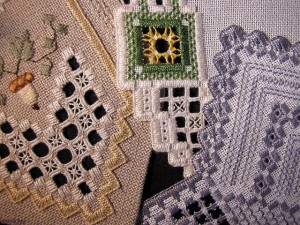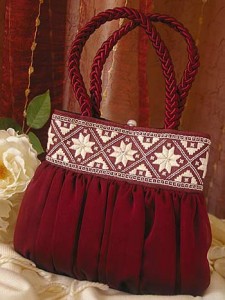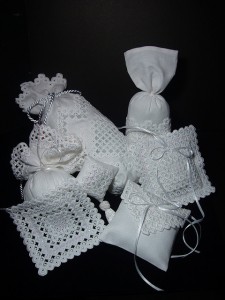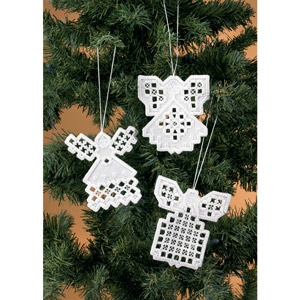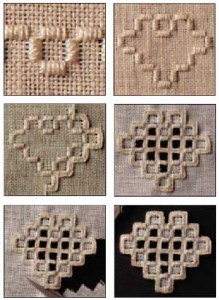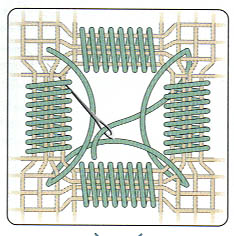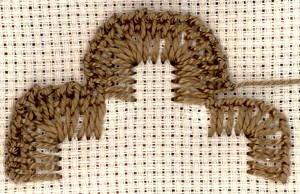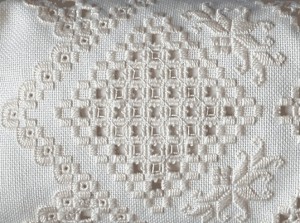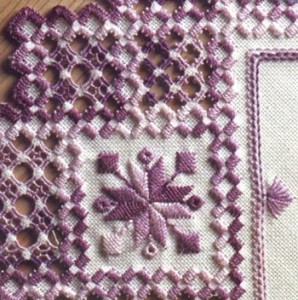Home / Contact
 Home /
Contact
Home /
Contact
 Paypal/ Card USD /
EUR
Paypal/ Card USD /
EUR
 Privacy
Privacy
EARN
MONEY with
Offers,Tasks & Surveys
Diamond Painting
 Diamond Painting Info
Diamond Painting Info
 Diamond Painting Kits
Diamond Painting Kits
Charts
 9.50 € /9.95 USD Charts / 2
9.50 € /9.95 USD Charts / 2
 Stitch pattern from photo
Stitch pattern from photo
Articles
 Articles
Articles
Email updates
 Get updates by email:
Get updates by email:
Shops and distributors
 UK Webshops
UK Webshops
 US Shops / 2
US Shops / 2
 US Retailers /
2
US Retailers /
2
 Distributors / DS2
Distributors / DS2
Designer Links
 Designer Links
/
2
Designer Links
/
2
 Scrapbooking designers
Scrapbooking designers
Charts and Kits
 Cross Stitch Designers
Cross Stitch Designers
 Cross Stitch Kit Shops
Cross Stitch Kit Shops
 Free Cross Stitch Patterns
Free Cross Stitch Patterns
 Mirabilia Kits /
2 /
3
Mirabilia Kits /
2 /
3
 Mirabilia Corrections
Mirabilia Corrections
 Lavender & Lace
Lavender & Lace
 Dimensions Kits /
2 /
3 /
4
Dimensions Kits /
2 /
3 /
4
 Christmas Kits
Christmas Kits
 Sewing Kits
Sewing Kits
 Heaven & Earth Kits
Heaven & Earth Kits
 Needlepoint Kits
Needlepoint Kits
 Told in a Garden
Told in a Garden
 Tobin Kits /
2
Tobin Kits /
2
 Mill Hill Kits
Mill Hill Kits
 Vervaco Kits /
2 /
3
Vervaco Kits /
2 /
3
 Candamar Kits /
2 /
3
Candamar Kits /
2 /
3
 Plastic Canvas Kits /
2 /
3
Plastic Canvas Kits /
2 /
3
 Imaginating Charts /
2 /
3 / 4
Imaginating Charts /
2 /
3 / 4
 Janlynn Kits /
2 /
3
Janlynn Kits /
2 /
3
 Riolis Kits /
2 /
3
Riolis Kits /
2 /
3
 RTO Kits /
2
RTO Kits /
2
 Passione Ricamo /
Free
Passione Ricamo /
Free
 Nora Corbett /
2
Nora Corbett /
2
 Butternut Road
Butternut Road
Cross stitch fabrics
 Aida, lugana, zweigart
Aida, lugana, zweigart
 Aida Fabric
Aida Fabric
 Best Aida Fabric Brand
Best Aida Fabric Brand
 More Cross Stitch Fabrics
More Cross Stitch Fabrics
 Aida, Evenweave, Lugana, Linen
Aida, Evenweave, Lugana, Linen
 Cross Stitch On Linen Or Evenweave /
2
Cross Stitch On Linen Or Evenweave /
2
 Aida & Other fabrics
Aida & Other fabrics
 Cross Stitch Fabrics /
2
Cross Stitch Fabrics /
2
 Fabric Count in Cross Stitch
Fabric Count in Cross Stitch
 Permin
Permin
 Linen/Evenweave Fabric Calculator
Linen/Evenweave Fabric Calculator
 Aida Fabric Calculator
Aida Fabric Calculator
 Cross Stitch Calculator
/2
/3
/4
/5
/6
Cross Stitch Calculator
/2
/3
/4
/5
/6
 Cross Stitch Calculator 7
/8
/9
/10
Cross Stitch Calculator 7
/8
/9
/10
Cross Stitch
 Cross Stitch Articles
Cross Stitch Articles
 Cross Stitch Charts
Cross Stitch Charts
 Cross Stitch Tips /2 /3 /4
Cross Stitch Tips /2 /3 /4
 Cross Stitch Stores
Cross Stitch Stores
 Cross Stitch Guide
Cross Stitch Guide
 Cross Stitch Guide For Beginners
Cross Stitch Guide For Beginners
 Cross Stitch For Beginners /2
Cross Stitch For Beginners /2
 Cross Stitch Booklet /2
Cross Stitch Booklet /2
 Cross Stitch Videotutorials
Cross Stitch Videotutorials
 Cross Stitch Videotutorials 2
Cross Stitch Videotutorials 2
 History of Cross Stitch
History of Cross Stitch
 How To C/Stitch /2 /3 /4 /5 /6
/7
How To C/Stitch /2 /3 /4 /5 /6
/7
 How To C/Stitch 8
/9 /10
/11
/12
How To C/Stitch 8
/9 /10
/11
/12
 How To C/Stitch 13
/14
/15
/16
/17
How To C/Stitch 13
/14
/15
/16
/17
 How To C/Stitch That WIll Last
How To C/Stitch That WIll Last
 Stitch by Stitch.A Practical Guide to Mastering Cross Stitch (ebook)
Stitch by Stitch.A Practical Guide to Mastering Cross Stitch (ebook)
 Cross Stitch Skein Estimator /
2
Cross Stitch Skein Estimator /
2
 How To C/Stitch Over Multiple Threads
How To C/Stitch Over Multiple Threads
 How To Make Money With C/Stitch
How To Make Money With C/Stitch
 How Much Money Is Your C/Stitch Worth
How Much Money Is Your C/Stitch Worth
 Can You Make Money Selling C/Stitch
Can You Make Money Selling C/Stitch
 9 FAQ About Starting a Craft Business
9 FAQ About Starting a Craft Business
 5 Basic Stitches in Cross Stitch
5 Basic Stitches in Cross Stitch
 Best Cross Stitch Books /
2
Best Cross Stitch Books /
2
 Cross Stitch Glossary /2 /3
Cross Stitch Glossary /2 /3
 Cross Stitch Wikipedia
Cross Stitch Wikipedia
 Cross Stitch Equipment /2
Cross Stitch Equipment /2
 C/Stitching on Aida,Evenweave,Linen
C/Stitching on Aida,Evenweave,Linen
 65 Cross Stitch Terms
65 Cross Stitch Terms
 88 Cross Stitch Terms
88 Cross Stitch Terms
 100 Cross Stitch Terms
100 Cross Stitch Terms
 20 FAQ About Cross Stitch
20 FAQ About Cross Stitch
 10 Tips for Cross Stitch
10 Tips for Cross Stitch
 15 Hints And Tips
15 Hints And Tips
 15 Tips And Tricks
15 Tips And Tricks
 Counted Cross Stitch Hints
Counted Cross Stitch Hints
 7 Reasons You Need To C/Stitch
7 Reasons You Need To C/Stitch
 Cross Stitch Coupons
Cross Stitch Coupons
 Cross Stitch On Waste Canvas
Cross Stitch On Waste Canvas
 Waste Canvas
Waste Canvas
 Cross Stitch Magazines
Cross Stitch Magazines
 What is the
Best C/Stitch Brand
What is the
Best C/Stitch Brand
 How To Use A DMC Color Card
How To Use A DMC Color Card
 Basic Stitches by Hand for Beginners /2
Basic Stitches by Hand for Beginners /2
 Health Benefits of Cross Stitch
Health Benefits of Cross Stitch
More Articles
 50 Ways To Earn Money With Crafts
50 Ways To Earn Money With Crafts
 20 Funny Sentences About Crafts
20 Funny Sentences About Crafts
 DMC Embroidery Threads
DMC Embroidery Threads
 Embroidery Threads
Embroidery Threads
 Embroidery Stitches
Embroidery Stitches
 Embroidery /
Embroidery Unveiled
Embroidery /
Embroidery Unveiled
 100 Embroidery Terms
100 Embroidery Terms
 Basics Of Hand Embroidery
Basics Of Hand Embroidery
 Embroidery Stitches. 16 Techniques
Embroidery Stitches. 16 Techniques
 Handling The Embroidery Thread
Handling The Embroidery Thread
 The Embroidery Hoop
The Embroidery Hoop
 Embroidery Hoop or Frame
Embroidery Hoop or Frame
 Cross Stitch Helpful Hints
Cross Stitch Helpful Hints
 Needlework Glossary
Needlework Glossary
 Needlecratf.Tips,Tricks,FAQS
Needlecratf.Tips,Tricks,FAQS
 Hand Dyed Floss /
2
Hand Dyed Floss /
2
 Hardanger Embroidery /
2
Hardanger Embroidery /
2
 Needle (Size) Guide /
2 /
3 /
4 /
5 /
6
Needle (Size) Guide /
2 /
3 /
4 /
5 /
6
 Needles
/
DMC Needles
Needles
/
DMC Needles
 On Threading a Needle
On Threading a Needle
 Knotting The Thread
Knotting The Thread
 Backstitch /
2
Backstitch /
2
 Needlepoint Inc Silk
Needlepoint Inc Silk
 Floss &Thread Organization & Storage /2
Floss &Thread Organization & Storage /2
 Scrapbooking /
Scrapbooking Guide
Scrapbooking /
Scrapbooking Guide
 Scrapbooking For Designers
Scrapbooking For Designers
 Magnifiers
Magnifiers
 Stamps and Stampings
Stamps and Stampings
 Macramé /
Art of
Macramé
Macramé /
Art of
Macramé
 Guide To Macramé
Guide To Macramé
 Macramé. Video Tutorials
Macramé. Video Tutorials
 Crochet Links
Crochet Links
 Crochet /
Art of Crochet
Crochet /
Art of Crochet
 Crochet Made Easy /
2
Crochet Made Easy /
2
 Basic Crochet Stitches /
2
Basic Crochet Stitches /
2
 Crochet Information /
2
Crochet Information /
2
 How To Crochet /
2
How To Crochet /
2
 Essential Guide To Crochet /
2
Essential Guide To Crochet /
2
 Crochet Encyclopedia /
2
Crochet Encyclopedia /
2
 Tapestry /
Tapestry Weaving
Tapestry /
Tapestry Weaving
 Anchor Tapestry Wool. Old To New Numbers
Anchor Tapestry Wool. Old To New Numbers
 Quilting /
Quilting Mastery
Quilting /
Quilting Mastery
 Quilter's Journey
Quilter's Journey
 10 Quilting Techniques
10 Quilting Techniques
 How to Make A Quilt /
2
How to Make A Quilt /
2
 Steps To Making A Quilt
Steps To Making A Quilt
 History of Quilting in America /
2
History of Quilting in America /
2
 Introduction to Quilting /
2
Introduction to Quilting /
2
 Basic Quilting Guide /
2
Basic Quilting Guide /
2
 Quilting Terms /
2
Quilting Terms /
2
 Stitch Dictionary /
2
Stitch Dictionary /
2
 Pintangle Stitch Dictionary
Pintangle Stitch Dictionary
 Stitch Types And Appearances
Stitch Types And Appearances
 Yarnist Knitter Newsletter
Yarnist Knitter Newsletter
C/Stitch
Blogs / Facebook
 59 Cross Stitch Blogs
59 Cross Stitch Blogs
 50 Cross Stitch Blogs
50 Cross Stitch Blogs
 40 Cross Stitch Blogs
40 Cross Stitch Blogs
 Cross Stitch on Facebook
Cross Stitch on Facebook
 Cross Stitch on Instagram
Cross Stitch on Instagram
Forums
 Crafts and C/Stitch Forums
Crafts and C/Stitch Forums
Applications
 23 Best Cross Stitch Apps
23 Best Cross Stitch Apps
 13 Mobile Apps for Stitchers
13 Mobile Apps for Stitchers
Crafts/Knitting/ Sewing Links
 35 Best Craft Sites
35 Best Craft Sites
 24 Best Craft Sites
24 Best Craft Sites
 23 Best Craft Sites
23 Best Craft Sites
 18 Best Craft Sites
18 Best Craft Sites
 85 Best Craft Blogs
85 Best Craft Blogs
 50 Best Craft Sites
50 Best Craft Sites
 Craft Books
Craft Books
 9 Craft Shops
9 Craft Shops
 Crafts Glossary /
2
Crafts Glossary /
2
 Craft Info
Craft Info
 100 Craft Youtube Channels /
2
100 Craft Youtube Channels /
2
 115 Knitting Blogs
115 Knitting Blogs
 40 UK Knitting Blogs
40 UK Knitting Blogs
 20 Knitting Blogs
20 Knitting Blogs
 Fixing Knitting Mistakes /
2
Fixing Knitting Mistakes /
2
 The 4-H Knitting Handbook /
2
The 4-H Knitting Handbook /
2
 Health Benefits of Knitting /
2
Health Benefits of Knitting /
2
 Beginning Knitting /
2
Beginning Knitting /
2
 Instructions for Knitting /
2
Instructions for Knitting /
2
 Fundamentals of Knitting /
2
Fundamentals of Knitting /
2
 How to Knit for Beginners /
2
How to Knit for Beginners /
2
 Beginning to Knit
Beginning to Knit
 Knitting
Knitting
 Knitting 2 /
Knitting 3
Knitting 2 /
Knitting 3
 Yarn Requirements for Knitting /
2
Yarn Requirements for Knitting /
2
 110 Sewing Blogs
110 Sewing Blogs
 Sewing /
Tips and Tricks
Sewing /
Tips and Tricks
 The Art of Sewing
The Art of Sewing
 Essential Sewing Tools & Equipment
Essential Sewing Tools & Equipment
 The Sewing Machine
The Sewing Machine
 How To Choose A Sewing Machine
How To Choose A Sewing Machine
 The 8 Very Best Sewing Machines
The 8 Very Best Sewing Machines
 How To Sew
How To Sew
 Sewing For Beginners /
2
Sewing For Beginners /
2
 Sewing Needles
Sewing Needles
 Schmetz Needles /
2
Schmetz Needles /
2
 Introduction To Sewing Machine /
2
Introduction To Sewing Machine /
2
 Understanding a Sewing Pattern /
2
Understanding a Sewing Pattern /
2
 Science of Sewing /
2
Science of Sewing /
2
 Sewing Basics.Know Your Needles /
2
Sewing Basics.Know Your Needles /
2
 Sewing Basics,Resource Guide /
2
Sewing Basics,Resource Guide /
2
Other Links
 Needlework Fabrics
Needlework Fabrics
 Needlework
Needlework
 Needlework Frames
Needlework Frames
 Needlework Patterns
Needlework Patterns
 Weeks Dye Works Retailers
Weeks Dye Works Retailers
 Sell Your Crafts Online
Sell Your Crafts Online
 10 Sites To Start Selling Crafts Online
10 Sites To Start Selling Crafts Online
 How To Sell On Etsy /2 /3
/4
How To Sell On Etsy /2 /3
/4
 Fabric Viewer
/2 /
3
Fabric Viewer
/2 /
3
 Punch Needle for Beginners
Punch Needle for Beginners
 Punch Needle FAQ
Punch Needle FAQ
 Punch Needle Tutorial
Punch Needle Tutorial
 Wonderfil Eleganza
Wonderfil Eleganza
 Eleganza/Cosmo/DMC
Eleganza/Cosmo/DMC
 CXC Thread Review
/2
CXC Thread Review
/2
 Needlepoint vs C/Stitch
Needlepoint vs C/Stitch
 10 Beginner Tips For Needlepoint
10 Beginner Tips For Needlepoint
 The Art Of Needlepoint
The Art Of Needlepoint
 How To Needlepoint. Guide
How To Needlepoint. Guide
 How To Needlepoint
/2
How To Needlepoint
/2
 Basic Needlepoint
Basic Needlepoint
 Gloriana Shops
Gloriana Shops
 Storage & Organization
Storage & Organization
 Eva Rosenstand
Eva Rosenstand
 Bucilla
Bucilla
 Vervaco Brand History
Vervaco Brand History
 Elizabeth Bradley
Elizabeth Bradley
 Sashiko
/2 /3
Sashiko
/2 /3
 3 Good Reasons To Try DMC Floche
3 Good Reasons To Try DMC Floche
 Amigurumi
Amigurumi
 Tapestry Crochet
Tapestry Crochet
 Paper Crafting
Paper Crafting
 Paper Cutting
Paper Cutting
 Paper Filgree (Quilling)
Paper Filgree (Quilling)
 Paper Flowers
Paper Flowers
 Paper Mache
Paper Mache
DMC
Info/Charts/Shops
 DMC World Shops /
2
DMC World Shops /
2
 Search DMC/Rosace colors
Search DMC/Rosace colors
 DMC / Rosace Color Card
DMC / Rosace Color Card
 DMC Color Card (Buy)
DMC Color Card (Buy)
 DMC Articles (MS Excel)
DMC Articles (MS Excel)
 DMC/Rosace Colors /
2 /
3
DMC/Rosace Colors /
2 /
3
 DMC Color Description
DMC Color Description
 DMC Color Description 2 /
3 /
4
DMC Color Description 2 /
3 /
4
 Discontinued DMC Threads
Discontinued DMC Threads
 DMC 35 New Colors
DMC 35 New Colors
 DMC Variegated To Solid Colors
DMC Variegated To Solid Colors
 DMC Variations To Solid Colors
DMC Variations To Solid Colors
 Mouline Etoile
Mouline Etoile
 Light Effects
Light Effects
 Variations /
2
Variations /
2
 Retors /
Satin
Retors /
Satin
 Linen /
2
Linen /
2
 Laine Colbert
Laine Colbert
 Coloris /
2 /
3 /
4
Coloris /
2 /
3 /
4
 Pearl Cotton Size 3 /
2
Pearl Cotton Size 3 /
2
 Pearl Cotton Size 5
Pearl Cotton Size 5
 Pearl Cotton Variations
Pearl Cotton Variations
 Pearl Cotton Balls #8 /
#12
Pearl Cotton Balls #8 /
#12
 Cebelia Crochet
Cebelia Crochet
 Floche
Floche
 Diamant
Diamant
 Babylo Crochet Yarn
Babylo Crochet Yarn
 Babylo Crochet Thread
Babylo Crochet Thread
 Special Dentelles
Special Dentelles
 Petra
Petra
 Cebelia Crochet Yarn
Cebelia Crochet Yarn
 Cordonnet Special
Cordonnet Special
 Broder Special
Broder Special
Anchor Info/Charts
 Anchor Colors /
Anchor 2
Anchor Colors /
Anchor 2
 Anchor Description Colors
Anchor Description Colors
 Anchor Colors And Names
Anchor Colors And Names
 Pearl Cotton #8 MC
Pearl Cotton #8 MC
 Pearl Cotton #8 Solid
Pearl Cotton #8 Solid
 Anchor Marlitt
Anchor Marlitt
 Anchor Metallic /
2
Anchor Metallic /
2
 Tapisserie Wool /
2
Tapisserie Wool /
2
 Anchor Lame
Anchor Lame
 Anchor Reflecta
Anchor Reflecta
More Color Charts / Shops
 Madeira
/
Viscose
Madeira
/
Viscose
 Presencia (Finca) /
2
Presencia (Finca) /
2
 Caron Collection /2
/3
/4
Caron Collection /2
/3
/4
 Caron Hand Dyed VG
Caron Hand Dyed VG
 Caron Wildflowers /
2
Caron Wildflowers /
2
 Caron Waterlilies
Caron Waterlilies
 Caron Watercolors
Caron Watercolors
 Classic Colorworks
Classic Colorworks
 Crescent (Classic Colorworks)
Crescent (Classic Colorworks)
 Crescent Colors /
2
Crescent Colors /
2
 Gloriana Silk Floss
Gloriana Silk Floss
 Gloriana All Threads /
2
Gloriana All Threads /
2
 Gütermann Skala /
Mara
Gütermann Skala /
Mara
 Gütermann 2 /
Sulky /
Tera
Gütermann 2 /
Sulky /
Tera
 Gütermann Sew All
Gütermann Sew All
 Glissen Gloss Colorwash Silk
Glissen Gloss Colorwash Silk
 Rainbow Gallery Threads
Rainbow Gallery Threads
 Rainbow Blending Glissen Gloss
Rainbow Blending Glissen Gloss
 Rainbow Gallery
Rainbow Gallery
 R/Gallery Splendor
R/Gallery Splendor
 R/Gallery Splendor Colors
R/Gallery Splendor Colors
 R/Gallery Wisper /
Braid Petite
R/Gallery Wisper /
Braid Petite
 R/Gallery Treasure Braid 4-8
R/Gallery Treasure Braid 4-8
 R/Gallery Treasure B. 12-16
R/Gallery Treasure B. 12-16
 R/Gallery Nordic Gold
R/Gallery Nordic Gold
 R/Gallery Fuzzy Stuff
R/Gallery Fuzzy Stuff
 R/Gallery Silk Lame Braid
R/Gallery Silk Lame Braid
 Riolis Shops
Riolis Shops
 Sullivans
Sullivans
 Threadworx Overdyed
Threadworx Overdyed
 Threadworx Overdyed Floss
Threadworx Overdyed Floss
 Threadworx Overdyed Pearls
Threadworx Overdyed Pearls
 Threadworx Quick Reference
Threadworx Quick Reference
 Threadworx Charts
Threadworx Charts
 Threadworx Designers
Threadworx Designers
 Au Ver A Soie /
2
Au Ver A Soie /
2
 J&P Coats
J&P Coats
 Dinky Dyes Silk/
Perle 600
Dinky Dyes Silk/
Perle 600
 Dinky Dyes Perle 1000/
P1900
Dinky Dyes Perle 1000/
P1900
 The Gentle Art Sampler /
2 /
3
The Gentle Art Sampler /
2 /
3
 The Gentle Art Simply Shaker
The Gentle Art Simply Shaker
 The Gentle Art Simply Wool
The Gentle Art Simply Wool
 YLI SR
YLI SR
 Cosmo
Cosmo
 Madeira
Madeira
 Mettler /
Mettler Threads
Mettler /
Mettler Threads
 Mettler (All)
Mettler (All)
 Rasant
Rasant
 Riolis (Catalog)
Riolis (Catalog)
 Valdani /
2
Valdani /
2
 Venus
Venus
 Weeks Dye Works
Weeks Dye Works
 Weeks Dye Works Floss
Weeks Dye Works Floss
 Puppets Conversion Chart
Puppets Conversion Chart
 Aurifil
Aurifil
 Panna
Panna
 Robison-Anton
Robison-Anton
Conversion tables
 DMC/Rosace-Anchor
DMC/Rosace-Anchor
 Dmc-Anchor & Description
Dmc-Anchor & Description
 DMC/Anchor Variegated
DMC/Anchor Variegated
 DMC Articles Conversion /
2 /
3
DMC Articles Conversion /
2 /
3
 DMC-Rayon-Anchor Marlitt
DMC-Rayon-Anchor Marlitt
 DMC-Needlepaints
DMC-Needlepaints
 DMC-Kreinik Metallics
DMC-Kreinik Metallics
 DMC Light Effects-Kreinik
DMC Light Effects-Kreinik
 DMC-Colbert Wool Conversion
DMC-Colbert Wool Conversion
 DMC-Presencia (Finca) /
2
DMC-Presencia (Finca) /
2
 DMC-Venus /
2
DMC-Venus /
2
 DMC-Gamma-Anchor-Madeira
DMC-Gamma-Anchor-Madeira
 DMC-Needlepoint Silk
DMC-Needlepoint Silk
 DMC-Splendor
DMC-Splendor
 DMC-Sullivans /
2
DMC-Sullivans /
2
 DMC-DFN (Janlynn)
DMC-DFN (Janlynn)
 DMC-Mill Hill Beads /
2
DMC-Mill Hill Beads /
2
 DMC-Anchor-Jp-Mill Hill
DMC-Anchor-Jp-Mill Hill
 DMC-Laine Colbert Wool
DMC-Laine Colbert Wool
 DMC-Bucilla /
2
DMC-Bucilla /
2
 DMC-Profilo /
2
DMC-Profilo /
2
 DMC-Anchor-Profilo-Ispe
DMC-Anchor-Profilo-Ispe
 DMC-Cosmo (& Seasons)
DMC-Cosmo (& Seasons)
 DMC-Design Works
DMC-Design Works
 DMC-Riolis
DMC-Riolis
 DMC-Valdani
DMC-Valdani
 DMC-Mandarin
DMC-Mandarin
 DMC-Anchor-Yeidami
DMC-Anchor-Yeidami
 DMC-The Gentle Art /2 /3
DMC-The Gentle Art /2 /3
 DMC-Puppets
DMC-Puppets
 DMC-Aurifil
DMC-Aurifil
 DMC-JPCoats
DMC-JPCoats
 DMC-Sulky
DMC-Sulky
 DMC-Flower Thread
DMC-Flower Thread
 RGB-DMC
RGB-DMC
 Dimensions-Anchor/DMC /2
Dimensions-Anchor/DMC /2
 Dimensions-DMC/Anchor/JPCoats
Dimensions-DMC/Anchor/JPCoats
 Dimensions-DMC /2
Dimensions-DMC /2
 Dome - DMC - Anchor
Dome - DMC - Anchor
 DMC-Weeks-Colorworks-Gast-Sullivans-Anchor
DMC-Weeks-Colorworks-Gast-Sullivans-Anchor
 DMC-Anchor-Semco-Madeira-JP-Cosmo-Olympus-YD /
2
DMC-Anchor-Semco-Madeira-JP-Cosmo-Olympus-YD /
2
 DMC-Light-Effects-Diamant-Rainbow-Gallery-PB-Kreinik#4 /
2
DMC-Light-Effects-Diamant-Rainbow-Gallery-PB-Kreinik#4 /
2
 Eva Rosenstand-DMC
Eva Rosenstand-DMC
 DMC-Au Ver Soie
DMC-Au Ver Soie
 Crescent Colors-DMC
Crescent Colors-DMC
 Anchor-DMC
Anchor-DMC
 Anchor Old To New Numbers
Anchor Old To New Numbers
 Anchor-Sullivans
Anchor-Sullivans
 Anchor-DMC-JPCoats
Anchor-DMC-JPCoats
 Anchor Wool-Paternayan-DMC
Anchor Wool-Paternayan-DMC
 Anchor-Tapestry Wool-DMC-Wool
Anchor-Tapestry Wool-DMC-Wool
 Anchor-Bucilla
Anchor-Bucilla
 Anchor-Kreinik Silk Mori
Anchor-Kreinik Silk Mori
 Bucilla-Sullivans
Bucilla-Sullivans
 E.Bradley-Anchor-DMC-Appletons Tapestry Wool
E.Bradley-Anchor-DMC-Appletons Tapestry Wool
 Sullivans-JP Coats
Sullivans-JP Coats
 Dinky Dyes-Gentle Art
Dinky Dyes-Gentle Art
 Soie D'alger - Needlepoint Silk
Soie D'alger - Needlepoint Silk
 Silk N' Colors - Gentle Art
Silk N' Colors - Gentle Art
 RB Gallery-Kreinik
RB Gallery-Kreinik
 Kreinik-Treasure Braid
Kreinik-Treasure Braid
 Glissen Gloss RB-Kreinik BF
Glissen Gloss RB-Kreinik BF
 Threads to Robison-Anton
Threads to Robison-Anton
 Weeks-Cosmo
Weeks-Cosmo
 Weeks Dye-Works-DMC
Weeks Dye-Works-DMC
 Gloriana Silk to Weeks Dye Works
Gloriana Silk to Weeks Dye Works
 Gloriana Silk To Caron Waterlilies To Silk N'Colors
Gloriana Silk To Caron Waterlilies To Silk N'Colors
 DMC - Delica Bead
DMC - Delica Bead
 Delica Bead - DMC
Delica Bead - DMC
 DMC-Anchor-JPCoats-Beats-Anton
DMC-Anchor-JPCoats-Beats-Anton
 Itchy-Stitchy - DMC
Itchy-Stitchy - DMC
 Mill Hill Beads To Miyuki
Mill Hill Beads To Miyuki
 Sulky Conversions
Sulky Conversions
 Knitting Needle Conversion
Knitting Needle Conversion
 Threadelight-Polyester-Machine-To-Pantone-R-A-Poly-R-A-Rayon-Sulky-Madeira
Threadelight-Polyester-Machine-To-Pantone-R-A-Poly-R-A-Rayon-Sulky-Madeira
Kreinik
 Distributors & Stores
Distributors & Stores
 Kreinik color Charts
Kreinik color Charts
 Kreinik Widths
Kreinik Widths
 Needle Selection Chart
Needle Selection Chart
 Kreinik colors /2 /3
Kreinik colors /2 /3
 Kreinik BF /
Kreinik #4
Kreinik BF /
Kreinik #4
 Kreinik #8 /
Kreinik Silk
Kreinik #8 /
Kreinik Silk
 Kreinik #12
Kreinik #12
 Metallic Selection Chart
Metallic Selection Chart
 Kreinik Selection Guides
Kreinik Selection Guides
 Braids.Uses And Care
Braids.Uses And Care
 BF.Uses And Care
BF.Uses And Care
 BF.Secrets
BF.Secrets
 Kreinik How-To
Kreinik How-To
 Kreinik Articles
Kreinik Articles
Mill Hill
 Mill Hill USA Vendors
Mill Hill USA Vendors
 Mill Hill Beads
Mill Hill Beads
 Mill Hill Magnifica
Mill Hill Magnifica
 Mill Hill Treasures 1
Mill Hill Treasures 1
 Mill Hill Treasures 2
Mill Hill Treasures 2
 Mill Hill Treasures 3
Mill Hill Treasures 3
 M.Hill.List of colors /
2
M.Hill.List of colors /
2
 Mill Hill colors
Mill Hill colors
Sponsors
Sponsor this site!
contact@mystitchworld.com
Welcome to MyStitchWorld.com. Cross Stitch Distributors
Hardanger Embroidery 2
Source:
https://www.stitchpiecenpurl.com/hardanger-embroidery.htm
|
